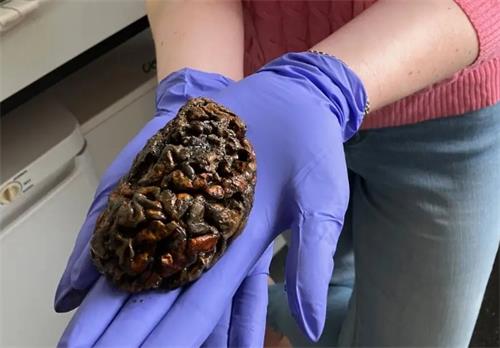
The brain is one of the most perishable organs in the human body. When blood flow is halted, irreversible damage starts within minutes. The lack of oxygen and the disruption of blood circulation cause brain cells to quickly break down, resulting in liquefaction. Within days, microorganisms start breaking down the brain, producing foul odors, and eventually leaving the skull hollow. Most soft tissues decompose quickly after death, yet intriguingly, some brains have managed to remain intact in natural environments for hundreds or even thousands of years. Researchers at Oxford University recently reviewed over 4,400 historical cases of well-preserved brains, some dating back as far as 12,000 years.
This extraordinary preservation has captured the interest of scientists. Alexandra Morton-Hayward, the lead researcher, noted that the rapid decay of the brain typically makes such cases exceedingly rare. Her goal is to uncover the reasons behind this unusual preservation.
Through in-depth analysis, researchers discovered that the phenomenon might be linked to protein misfolding. Disruptions in the cellular environment can cause proteins to misfold. In the brain, misfolded proteins are associated with various neurodegenerative diseases, such as Alzheimer’s and Parkinson’s.
While protein misfolding can lead to disease, scientists have also found that it may be key to brain preservation after death. Under specific conditions, misfolded proteins can form stable clumps that endure for hundreds or even thousands of years.
As early as 2008, archaeologists discovered a 2,500-year-old skull in Heslington, England, which still contained a preserved brain despite the disappearance of other soft tissues. Analysis suggested that the brain was preserved due to protein aggregation.
Misfolding and aggregation of brain proteins are known to be fundamental causes of some neurological diseases. Under certain pathological conditions, misfolded proteins can reach a thermodynamically stable state, leading to irreversible aggregation. Franz-Ulrich Hartl from the Max Planck Institute in Germany remarked that if similar mechanisms are responsible for the preservation of ancient brains, it wouldn’t surprise him. He believes these preservation processes might resemble the degenerative changes seen in the nervous system.
Morton-Hayward and her team at Oxford expanded their research to analyze ancient brain samples from around the world. Among the 600+ brain samples collected, the oldest dated back 8,000 years. Using advanced technologies, she identified over 400 types of proteins that persisted in ancient brains and discovered minerals and molecules associated with brain preservation.
The study revealed that specific burial environments can promote brain preservation, particularly low-lying, damp, and oxygen-poor areas. Since the brain is composed of about 80% water, with the remainder being proteins and lipids, such environments facilitate preservation through a process called molecular cross-linking. In this process, residual brain proteins and degraded lipids combine to form a polymeric substance with high chemical stability, allowing the brain to resist decay for centuries.
Though these polymers differ from the amyloid substances found in diseases like Alzheimer’s, their preservation mechanisms are strikingly similar to neurodegenerative processes. Morton-Hayward’s research indicates that iron imbalance and oxidative damage are critical factors in brain preservation. The accumulation of iron may act as a catalyst for brain aging and neurodegenerative diseases. She hypothesizes that these changes might begin during life and continue after death.
Unlike other soft tissues that can transform into adipocere (a waxy substance formed from fat), the brain’s chemical properties allow it to be preserved through molecular cross-linking. Rich in proteins and lipids, the brain maintains structural stability even after death.
Furthermore, the brain’s plasticity during life contributes to its ability to remain intact post-mortem. About one-third of brain proteins are intrinsically disordered proteins (IDPs), capable of adopting multiple configurations. These proteins help form solid aggregates—acting as a “molecular mortar” that functions as a long-lasting preservative.
These findings unveil a fascinating scientific phenomenon: the brain not only demonstrates remarkable plasticity during life, but its unique chemical properties also allow it to undergo unexpected long-term preservation after death. This research not only enhances our understanding of ancient brain preservation mechanisms but also provides new insights into the study of neurodegenerative diseases.

Marx,Jenny
The Love Story of Marx and Jenny: A Devotion Beyond the Ordinary
Behind every great love story lies an unwavering soul, and for Karl Marx, that soul was his beloved Jenny.Jenny was widely recognized as the most beautiful woman in Trier—graceful, intelligent, and born into an aristocratic family.

the Crystal Skulls
The Mystery of the Crystal Skulls: Exploring the Enigmatic Relics of Ancient Civilizations
The crystal skulls, regarded as one of the most mysterious archaeological relics in the world, have long captivated people's attention.

The Astronomical Code
Celestial Relics: The Astronomical Code on an Ancient Clay Tablet
2,150 years ago, in present-day Iraq, archaeologists uncovered a circular clay tablet at the ruins of Nineveh, the ancient capital of Assyria.


